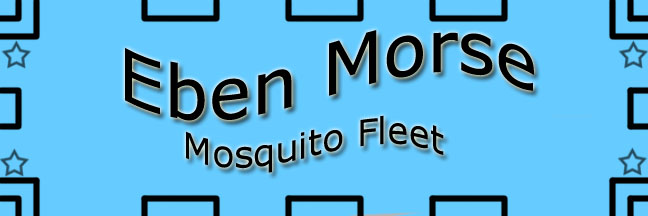 |
Mosquito Fleet |
According to the Encyclopedia of North Carolina <N Cpedia> The Mosquito Fleet was the whimsical nickname for the four small steamers that comprised the North Carolina Navy at the beginning of the Civil War. The ships were under orders not only to defend sounds and rivers, but also to seize Union ships moving along the coast. Japanese aircraft had been on a PT boat hunt in the Solomon Islands, bombing the PT base at Rendova Island. It was essential to the Japanese that several of their destroyers make it to the southern tip of Kolombangara Island to get war supplies to forces there. But the torpedo capacity of the American PTs was a potential threat. Despite the base bombing at Rendova, PTs set out to intercept those Japanese destroyers. In the midst of battle, Japan’s Amaqiri hit PT-109, leaving 11 crewmen floundering in the Pacific. After five hours of clinging to debris from the decimated PT boat, the crew made it to a coral island. Kennedy decided to swim out to sea again, hoping to flag down a passing American boat. None came. Kennedy began to swim back to shore, but strong currents, and his chronic back condition, made his return difficult. Upon reaching the island again, he fell ill. After he recovered, the PT-109 crew swam to a larger island, what they believed was Nauru Island, but was in fact Cross Island. They met up with two natives from the island, who agreed to take a message south. Kennedy carved the distress message into a coconut shell: “Nauru Is. Native knows posit. He can pilot. 11 alive need small boat.” The message reached Lieutenant Arthur Evans, who was watching the coast of Gomu Island, located next to an island occupied by the Japanese. Kennedy and his crew were paddled to Gomu. A PT boat then took them back to Rendova. Kennedy was ultimately awarded the Navy and Marine Corps Medal, for gallantry in action. The coconut shell used to deliver his message found a place in history—and in the Oval Office. Written by: |